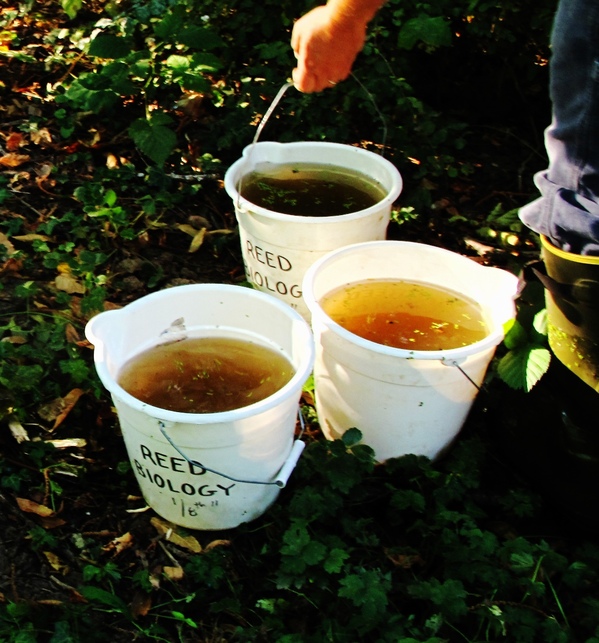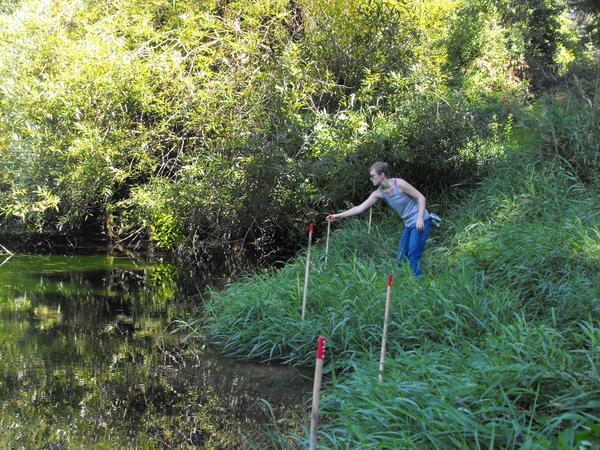Another beautiful summer is winding down in the canyon- which for us means two things. The yellow jackets are extra nasty right now, and it’s time to start diving deep into the inner questions of the canyon and set up our research stations for the Biology and Chemistry classes. This year undergraduates are going to be observing the populations of stickleback fish in Reed Lake and comparing that to an upland pond just east of our main spring source- where we have noticed the same type of fish surviving in a low oxygen, warmer temperature environment. Looking at these fish more closely we can see that there is significant morphological variation in these Threespine Sticklebacks depending on where they were observed. – Very exciting if you’re one of those fish/genetics types.
Also within the Chemistry department we are now taking a look at Phosphorus in the springs system. Phosphorus is common in fresh water systems but can be affected by the use chemical fertilizers and the movement of organic wastes. Phosphorus is important for plants to be healthy, but too much in the water can speed up plant growth to an abnormal level and reduces the levels of suspended dissolved oxygen. Soil erosion can also lead to increased levels of Phosphorus in the water- which is why so much of the early restoration efforts focused on establishing a safe trail system away from the waters edge resulting in a reduction of compaction near the lake, and lower stream area nearest the theater building.
We’ll check back and let you know what we find out there- in the meantime if you’re interested in past research in the canyon and student thesis with a focus on the canyon take a look at research in Reed Canyon.

